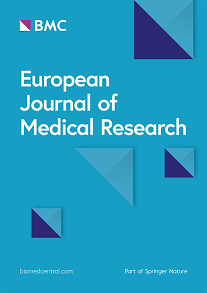
The efficacy of tourniquet use in ankle trauma surgery

The efficacy of tourniquet use in ankle trauma surgery
Meta-analysis on the efficacy of tourniquet on ankle trauma surgery
Eur J Med Res. 2013 Dec 10;18:55. doi: 10.1186/2047-783X-18-55Did you know you're eligible to earn 0.5 CME credits for reading this report? Click Here
Synopsis
3 randomized controlled trials examining the safety and efficacy of tourniquet use in ankle trauma surgery were included in this meta-analysis. The purpose of this review was to compare operative time, hospital stay, ankle range of motion, postoperative infection rates and the incidence of deep venous thrombosis between patients undergoing surgery with or without the use of a tourniquet. Pooled results indicated that tourniquet use in ankle trauma surgery yielded a significantly longer hospital stay and reduced ankle range of motion. Operative time, postoperative infection rates, and the incidence of deep venous thrombosis were statistically similar between groups.
Were the search methods used to find evidence (original research) on the primary question or questions stated?
Was the search for evidence reasonably comprehensive?
Were the criteria used for deciding which studies to include in the overview reported?
Was the bias in the selection of studies avoided?
Were the criteria used for assessing the validity of the included studies reported?
Was the validity of all of the studies referred to in the text assessed with use of appropriate criteria (either in selecting the studies for inclusion or in analyzing the studies that were cited)?
Were the methods used to combine the findings of the relevant studies (to reach a conclusion) reported?
Were the findings of the relevant studies combined appropriately relative to the primary question that the overview addresses?
Were the conclusions made by the author or authors supported by the data and or analysis reported in the overview?
How would you rate the scientific quality of this evidence?
Yes = 1
Uncertain = 0.5
Not Relevant = 0
No = 0
The Reporting Criteria Assessment evaluates the transparency with which authors report the methodological and trial characteristics of the trial within the publication. The assessment is divided into five categories which are presented below.
4/4
Introduction
4/4
Accessing Data
4/4
Analysing Data
3/4
Results
3/4
Discussion
Detsky AS, Naylor CD, O'Rourke K, McGeer AJ, L'Abbé KA. J Clin Epidemiol. 1992;45:255-65
The Fragility Index is a tool that aids in the interpretation of significant findings, providing a measure of strength for a result. The Fragility Index represents the number of consecutive events that need to be added to a dichotomous outcome to make the finding no longer significant. A small number represents a weaker finding and a large number represents a stronger finding.
Why was this study needed now?
Tourniquet use in orthopaedic surgery is thought to provide benefits such as improved visualization in the surgical field, shortened operative time, and minimized intraoperative blood loss. However, it may contribute to an increased risk in serious complications, such as pulmonary embolism, superficial wound infection, and acute thrombosis. Despite a number of meta-analyses having been conducted on this topic, the use of a tourniquet in orthopaedic surgery remains controversial. This meta-analysis summarized the results of randomized controlled trials evaluating the safety and efficacy of tourniquet use in ankle trauma surgery.
What was the principal research question?
Is the use of a tourniquet safe and effective in ankle trauma surgery?
What were the important findings?
- 3 randomized controlled trials (n=166) were included in this meta-analysis. Between the three studies, 82 patients were in the tourniquet group and 84 patients were in the non-tourniquet group.
- All 3 included studies reported data on operative time (n=166). Pooled data revealed no significant difference between tourniquet and no tourniquet (MD -5.45 [95% CI -13.98, 3.09]; p=0.21). This meta-analysis was performed using a random-effects model, as heterogeneity was found to be significant (p=0.02; I-squared=73%).
- Pooled data from two studies (n=134) reporting hospital stay indicated that tourniquet use was significantly associated with a longer hospital stay (MD 3.17 [95% CI 1.39, 4.95]; p=0.0005). Heterogeneity was found to be insignificant (p=0.72; I-squared=0%).
- Two studies (n=134) reported ankle range of motion. Via the fixed-effect model, pooled data found a significant difference in ankle range of motion, favouring the non-tourniquet group (MD -5.25 degrees [95% CI -9.61, -0.89]; p=0.02). Heterogeneity between studies was not statistically significant (p=0.51; I-squared=0%).
- With respect to postoperative infection rates (2 studies; 134 patients), there was no significant difference with or without the use of a tourniquet (RR 1.83 [95% CI 0.65, 5.12]; p=0.25). Heterogeneity between studies was not significant for this outcome (p=0.88; I-squared=0%).
- There was no significant difference in the incidence of deep venous thrombosis (2 studies; 134 patients) between the two groups (RR 4.13 [95% CI 0.47, 36.17]; p=0.20). Heterogeneity between studies was not significant for this outcome (p=0.84; I-squared=0%)
What should I remember most?
Tourniquet use in ankle trauma surgery resulted in significantly longer hospital stay and reduced ankle range of motion. Operative time, postoperative infection rates, and the incidence of deep venous thrombosis were statistically similar between groups.
How will this affect the care of my patients?
Results from this meta-analysis suggest that, although safe, the use of a tourniquet in ankle trauma surgery may decrease range of motion and increase length of hospital stay. Additional randomized controlled trials are needed to confirm these findings. Furthermore, future meta-analyses should perform a funnel plot analysis to assess selection bias.
Learn about our AI Driven
High Impact Search Feature
Our AI driven High Impact metric calculates the impact an article will have by considering both the publishing journal and the content of the article itself. Built using the latest advances in natural language processing, OE High Impact predicts an article’s future number of citations better than impact factor alone.
Continue



 LOGIN
LOGIN

Join the Conversation
Please Login or Join to leave comments.